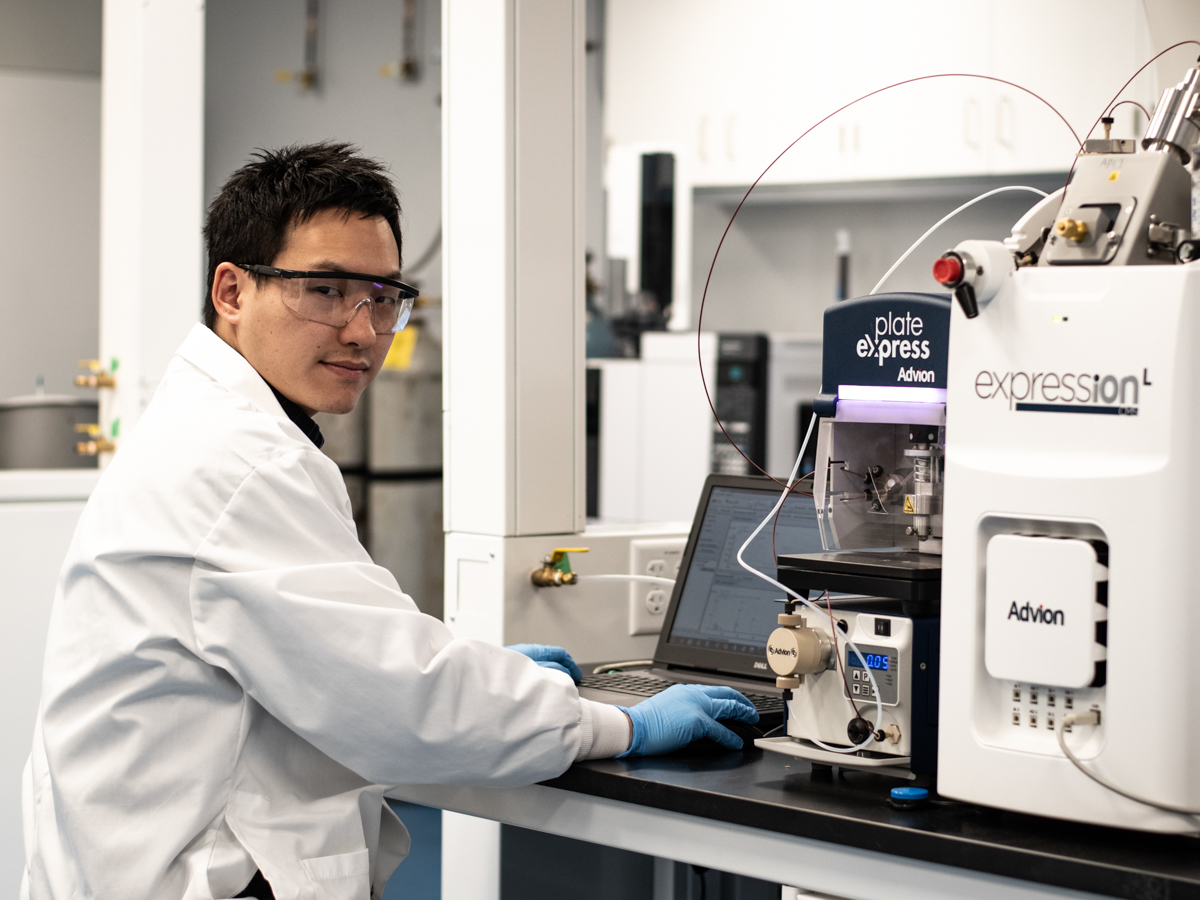Making Light- and Moisture-Stable Inorganic Tin Polymers

Discovered in 1977, conducting polymers (CPs) are a class of electronic materials that are attracting increasing research interest due to their potential applications with electronics – including cell phones, computers and TVs.
In Ryerson’s Department of Chemistry and Biology, Jeffrey Pau, a PhD student in Molecular Science,
has focused on making stable indium-polystannanes by mixing two different types of neighbouring elements in the periodic table – indium and tin for the polymer backbone.
Pau, whose supervisor is Daniel Foucher, explains the focus on tin in particular. “Tin is located in Group 14 of the Periodic Table under the elements such as carbon, silicon, and germanium. One interesting property of Group 14 elements are that polymers in solid state are semi-conducting. Carbon and silicon have been especially well-studied for this property throughout the decades.”
Pau says tin can be tuned extrinsically to improve its conductivity, or band gap. “The lower the band gap, the better the conductivity and less energy is required to excite and electron.” He and collaborators in the Foucher lab, Robert Gossage and Stephen Wylie, both Chemistry professors at Ryerson, also selected tin as it can “intrinsically be improved by needing no further tuning after polymerization.” But while polystannanes are ideal on the one hand, due to their very low band gap (< 2.8 eV), Pau also discussed one disadvantage with elements like tin – namely, they’re also very light and moisture unstable. “Exposure to light or water will cause decomposition of the material.”
How to counter this problem? “To try to make it light stable, azobenzene was incorporated as an antenna to deflect photons from light using the cis- and trans- isomer switching property,” says Pau. “To prevent decomposition from moisture, the tin center is protected by adding a fifth bond (hypercoordination) to make it bulkier.”
To image the orientation and geometry of the compound, Ryerson researchers worked with Alan Lough, a crystallographer at U of T who helped with the single X-ray analysis. Pau says, “The crystal structure showed the hypercoordination dative bonding from oxygen to tin in the solid state. All the polymers were characterized under GPC, NMR and elemental analysis.” Next, to confirm the light and moisture stability, Paus says researchers exposed the polymers to daylight and air over a four-month period. They monitored all changes in UV-visibility and NMR. The results were promising: “Homopolymer 7 was found to have unprecedented moisture and light stability in the solid state for greater than six months,” they concluded.
Recently, the group’s findings were recently published in the journal, Chemistry: A European Journal, in an article called, “Proof of Concept Studies Directed Towards Designed Molecular Wires: Property-Driven Synthesis of Air and Moisture-Stable Polystannanes.” (external link)
The next stage for this research, he adds, would be to test conductivity. “Stable polystannanes have the potential to be one of the future conductive polymeric wires in industry for printable and flexible electronics or circuit boards…conductive polymers will be needed for better and faster performances in the future.”
Pau, who in his third year of doctoral studies, plans to complete his PhD with Foucher. He is enthusiastic about his studies at Ryerson. “There is a close and tight relationship within our Chemistry and Biology department. Everyone is very friendly to each other. I enjoyed the most being in KHN202. That is my work place but also a nice place to hang out with my lab-mates which I also consider to be my close friends.”
The group’s research was assisted by funding from Ryerson and NSERC.